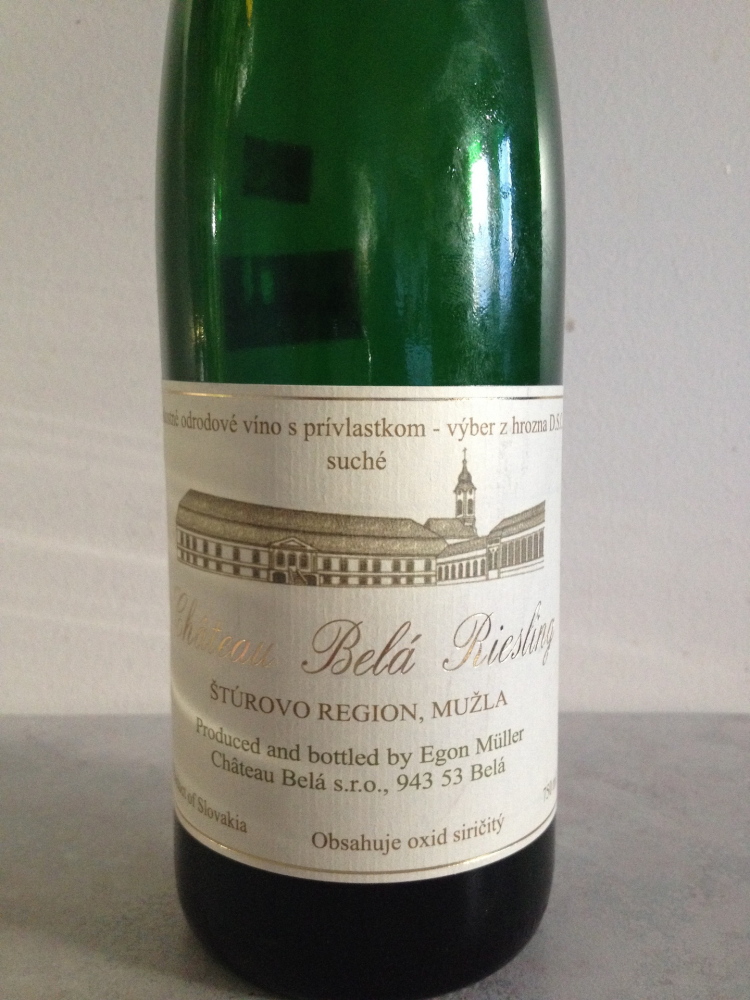The wines of Egon Müller Scharzhof, a centuries-old estate in Germany’s Saar River valley, are some of the most highly sought-after in the world, and the prices are commensurate. The late-harvest wines consistently fetch more than $3,000 a bottle at auction, even for newer vintages. (This makes the $40 to $70 prices for the earlier-picked styles seem a flat-out bargain.)
The winery produces exclusively estate-grown Rieslings, and only within the Prädikat ripeness classification that includes Kabinett, Spätlese, Auslese, Beerenauslese, Trockenbeerenauslese and Eiswein. In an era when the Germans are producing ever more dry Rieslings and consigning those with noticeable residual sugar to a slightly embarrassing side note, Müller Scharzhof’s dedication to the classic styles is noteworthy.
Because of the latter half of this column’s first paragraph, there’s not much sense in my writing more about Müller Scharzhof (even if I’d tasted the wines, which I haven’t). But it is urgent that we speak of Müller. Egon Müller IV, the current director of the estate, began a partnership with another centuries-old estate in 2001 that bears immediate attention, for under $20 a bottle.
The partner winery belongs to Baron Ullman, along the Danube River in Slovakia. Now, don’t you dare roll your eyes at me. Vines have been planted in Slovakia’s Stúrovo region since Roman times (same goes for the legendary Scharzhofberg hill in the Saar that provides grapes for most of Müller’s German wines).
Müller visited the Stúrovo region in 2000, following up on his wife’s connections to descendants of Baron Georg Ullman de Baranyavá. He expected mountains and snow, but instead discovered in the riparian vineyards there a relatively warm continental climate with loose soils on top of limestone that for him compared with Austria.
He also immediately fell in love with the entire area and the people who live there. Because of the Austrian-terroir association as well as an acknowledgment that the German market wanted dry wines, Müller then decided to make a dry Slovakian Riesling at the Château Belá winery that he developed in conjunction with a nearby winemaker, Miroslav Petrech.
And so, we now have the Château Belá Riesling, currently in the magnificent 2011 vintage, for just $17 (available in Maine through National Distributors; Maine and New York City are the only American markets for the wine).
Its elegance is a sexy elegance, or even sexed: overflowing, juicy lips and soft flesh. Its power oozes. After the wine departs your mouth, your mouth is still full, savoring the wake of woodsy, piney aromas and exotic tangerine acidity. And unlike most Alsatian or Austrian Rieslings I know, the Belá adds a refreshing chalky element as well (thanks, Slovakian limestone subsoil!).
If you think you know Riesling, regardless of whether your conclusions are positive or negative, you must try this wine. If you treasure the magical juxtaposition – almost common in great white wines but confined in reds to the likes of aged Burgundy and Barolo – of opulence married to precision, join in as well.
And if you have heard of but not experienced the transformations that take place as German wines age, where primary fruit and pronounced sweetness mellow into an earthy, multilayered but seamless maturity, the Belá is a sort of cheat.
Even drunk young (as long as you let it open up for an hour or so and keep it just cooler than room temperature), this modest Slovakian wine presents a settled, abiding wisdom and profundity that bely the less-than-top-tier status of its age and nationality.
Dry and relatively high in alcohol (one spot on the label says 13 percent, another says 14 percent), the Château Belá is no German Spätlese. But it’s akin in my mind to the increasingly common Spätlese Trocken style, where the largess of late-picked grapes is encapsulated in a fully fermented wine.
On a less technical level, that means the wine tastes fresh and vital but with one foot in a time gone by, a world we’ve forgotten, a set of facts worth recovering.
I’ve read and heard that this is the realm Müller Scharzhof’s Saar Rieslings regularly occupy. I’ll continue to read and hear, and maybe one day taste. For now, I have Château Belá.
I DON’T USUALLY announce local wine events in this space, but from 6 to 8 p.m. April 7 at Grace Restaurant in Portland, SoPo Wine Co. will sponsor a special event for a good cause.
It’s called Good Wine for a Good Cause, in fact, with all proceeds from sales of the $25 tickets ($30 day-of) going to the Cancer Community Center of South Portland.
Tickets provide the opportunity to taste wines from more than 25 wineries around the world, with many of the winemakers themselves in attendance. (The winemakers will be in town for SoPo’s spring trade show; speaking from my personal experience at shows from past years, these are truly real-deal people with terrific wines and great stories.) Online tickets and more information are available at www.stayclassy.org/portland/events/2014-good-wine-for-good-cause/e31479.
Tickets may also be purchased in person at RSVP and the Cancer Community Center.
Joe Appel works at Rosemont Market. He can be reached at:
soulofwine.appel@gmail.com
Send questions/comments to the editors.



Success. Please wait for the page to reload. If the page does not reload within 5 seconds, please refresh the page.
Enter your email and password to access comments.
Hi, to comment on stories you must . This profile is in addition to your subscription and website login.
Already have a commenting profile? .
Invalid username/password.
Please check your email to confirm and complete your registration.
Only subscribers are eligible to post comments. Please subscribe or login first for digital access. Here’s why.
Use the form below to reset your password. When you've submitted your account email, we will send an email with a reset code.